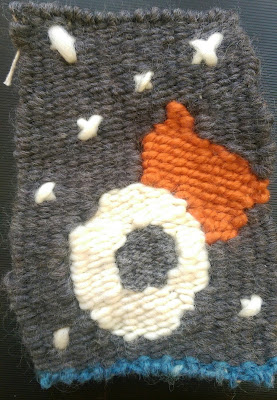If you have been swept away with the Sashiko stitching craze (like me) you are probably looking for easy ways to transfer designs onto your fabric without the hassle of tracing out grids, or buying expensive templates.
I have found a fabulous way to transfer your design onto fabric using an ink jet printer (these are the ones generally used at home with ink that is water soluble) and freezer paper. Freezer paper is the old fashioned way to wrap and store meat in the freezer and can be readily found in the supermarket. If you have trouble finding it, you can make your own (and I'll go into these steps in another post).
You willl need:
- Freezer paper
- Scissors
- Fabric (any light weight fabric will work)
- Iron
- Printer
Step 1
Iron your fabric first to remove any wrinkles. You can work with any light weight fabric and I often use muslin (calico) because it is a good weight and it prints well. I often dye my fabrics before printing to create extra depth and interest, however plain fabrics work well too. The above sample was printed on indigo dyed muslin and the black ink contrasts well against the deep blue.
Step 2
Cut out a section of freezer paper to the same size of your printer paper (either 8.5"x11" or A4). I use a piece of printer paper as a guide or you could use card stock for something more durable.
Step 3
Place the freezer paper shiny side (plastic) down towards the fabric and iron it. The plastic will melt and adhere to the fabric.
Step 4
Cut around the paper making sure you have no frayed edges and that you are cutting close to the paper edge.
Step 5
Place your fabric/paper into the printer facing the correct way. ie with my printer HP Envy 4000 I place it fabric side down with the paper side visible on the top. This ensures that the print goes on the fabric and not the other side. (if you get confused and accidentally place it the other way around, simply flip it and run it though the printer again)
Step 6
Press print! It should run through the printer ok and out comes an image printed on your fabric.
Step 7
You can peel off the paper and start sewing your design.
Step 8
I use a water base ink so that I can wash off the printed design after I have finished embroidering the pattern, however there are waterproof inks available if you wanted to have a permanent design.
These are some examples of fabrics that have been printed using my inkjet printer. The one below you can see wasn't completely ironed onto the freezer paper and was wrinkled going through the printer. But it still went through ok without getting stuck!
You can find lots of sashiko stencils online to download onto your computer to print.
Happy Stitching!





























